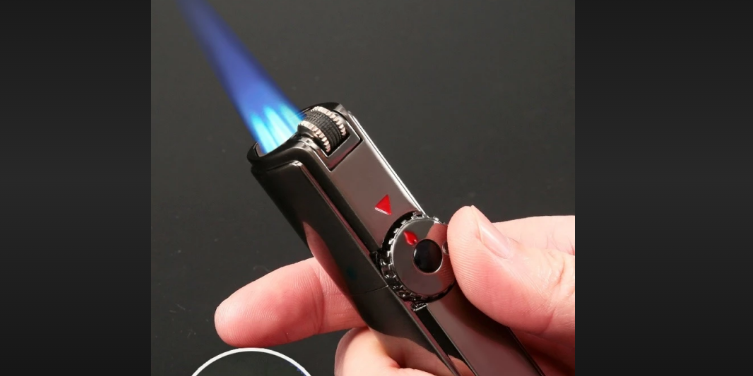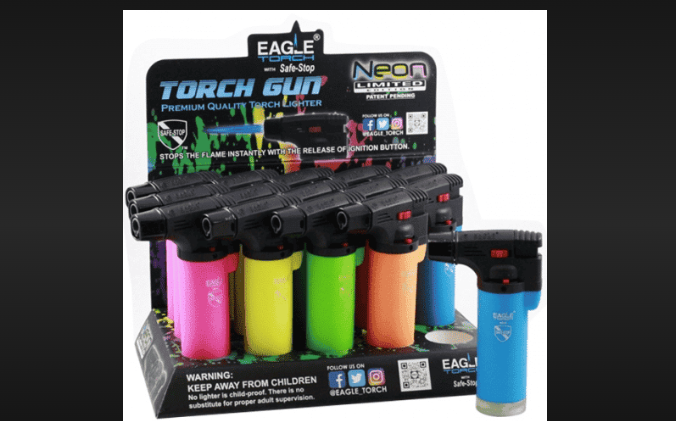Troubleshooting Guide: Eagle Torch Lighter Won't Light
A reliable torch lighter is essential for various activities, from lighting candles to outdoor adventures. If you're facing the frustrating issue of an Eagle Torch lighter that won't light, you're not alone. In this article, we'll walk you through a troubleshooting guide to help you diagnose and resolve the problem, ensuring your torch lighter functions as intended.

The lighter light
1. The Importance of a Functional Torch Lighter
Torch lighters, like the Eagle Torch brand, are favored for their powerful flame, making them ideal for tasks that require a consistent and controlled ignition.
When your torch lighter fails to light, it can disrupt your plans and create inconvenience.
2. Common Reasons for a Non-Lighting Torch Lighter
Several factors can contribute to a torch lighter's failure to ignite:
-
Air Pocket: Air pockets can form within the fuel chamber, preventing proper gas flow and combustion.
-
-
Flint Issue: The flint, responsible for producing sparks, might be worn out or misaligned.
-
-
Fuel Depletion: If the butane fuel level is low, the lighter may not generate a flame.
-
-
Air Intake Blockage: Debris or dust could block the air intake, interfering with the lighter's functionality.
3. Step-by-Step Troubleshooting
Here's a step-by-step troubleshooting guide to help you address the issue of an Eagle Torch lighter that won't light:
Step 1: Check the Fuel Level Ensure that your lighter has an adequate amount of butane fuel. If the fuel level is low, refill the lighter following the manufacturer's instructions.
Step 2: Bleed the Lighter Hold the lighter upside down and press the refill valve with a small tool (e.g., a screwdriver) to release any trapped air or gas. Bleeding the lighter helps remove air pockets that might hinder ignition.
Step 3: Check the Flint Wheel Inspect the flint wheel for any signs of damage or wear. If the flint is worn out, you'll need to replace it. If the flint is intact but not striking correctly, adjust the wheel's position to ensure proper contact with the flint.
Step 4: Purge the Air After refilling the lighter with butane, it's essential to wait for a few minutes before attempting to ignite it. This allows any air that entered the fuel chamber during refilling to dissipate.
Step 5: Check for Debris Inspect the lighter's burner and ignition area for debris or dust buildup. Use compressed air or a small brush to clean the components gently.
Step 6: Adjust the Flame Setting If your lighter produces a weak flame or no flame at all, the flame adjustment might be too low. Use the flame adjustment wheel to increase the flame's intensity and test if the lighter ignites.
Step 7: Test in a Controlled Environment If you've tried the above steps and the lighter still won't light, try testing it in a controlled environment away from wind or drafts. Windy conditions can affect the flame's stability, making it difficult to assess whether the lighter is functioning correctly.
Step 8: Contact Customer Support If none of the troubleshooting steps yield positive results, consider reaching out to Eagle Torch's customer support. They might provide additional guidance or recommend professional assistance.
4. Preventive Measures
To ensure your Eagle Torch lighter remains functional, consider implementing these preventive measures:
-
Regular Maintenance: Clean your lighter's components periodically to prevent debris buildup that could affect its performance.
-
-
Use High-Quality Butane: Opt for high-quality, filtered butane fuel for refilling your lighter. Impurities in low-quality butane can lead to clogs and reduced performance.
-
-
Store Properly: Store your lighter in a dry and cool place to prevent exposure to extreme temperatures that might impact its internal components.

Torch gun
A torch lighter that won't light can be a frustrating experience, but with the right troubleshooting steps, you can often identify and resolve the issue. By checking the fuel level, bleeding the lighter, inspecting the flint wheel, and addressing potential air pockets or debris, you can increase the chances of restoring your Eagle Torch lighter to its optimal functionality. Regular maintenance and proper usage practices can also contribute to a longer-lasting and reliable torch lighter that's ready to provide the flame you need for various tasks.